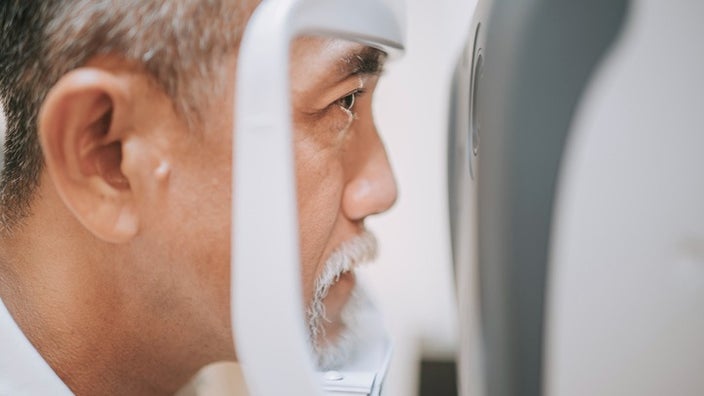
LASIK Eye Surgery: Costs, Insurance Coverage, and How to Save
Key takeaways:
LASIK is the most common laser treatment for blurred vision.
The people most likely to get good results from LASIK are nearsighted or farsighted. People with some kinds of astigmatism can benefit, too.
Some vision-care plans include discounts or payment plans for LASIK.

Approved by the Food and Drug Administration (FDA) more than 20 years ago, LASIK is now the most popular laser treatment in the U.S. for vision correction. “LASIK” stands for “laser-assisted in situ keratomileusis.” Adults from all walks of life have LASIK surgery when they want clearer vision without glasses or contact lenses.
The decision whether to have LASIK surgery is a personal one; the treatment isn’t right for everyone. The FDA urges people to think for themselves about the risks and benefits: “Try to avoid being influenced by friends that have had the procedure or doctors encouraging you to do so.”
In this article, we’ll walk you through the basics of LASIK, plus information about costs, risks, and benefits. We’ll also suggest some ways to find a LASIK specialist.
Search and compare options
What is LASIK?
LASIK is eye surgery that uses a special laser to change the shape of the cornea, the clear lens that covers and protects the front part of the eye. The goal is to fix “refractive errors,” the blurry vision you get when light hits the inside of your eye in the wrong place. Correcting those errors should make your eyesight clearer.
How is LASIK done?
The process is straightforward. First, the doctor uses special eye drops to make your eyes feel numb. Then the doctor puts a small device in place to keep your eyelids open during the surgery. At this point, the doctor cuts a flap into the cornea and folds it back. With the laser, the doctor reshapes the cornea. Afterwards, the flap is put back in place. Overall, the surgery should take less than 30 minutes.
You can have LASIK done for one eye at a time or for both eyes on the same day. The choice is yours. Like any surgery, though, there are risks. That’s why some doctors do one eye at a time, so that they can check how that eye heals before moving on to the second one.
Who is a good candidate for LASIK?
LASIK may work for you if you have nearsightedness (myopia) or farsightedness (hyperopia). If you have astigmatism, in which the shape of your cornea or lens makes objects both near and far seem blurry, LASIK may or may not be able to correct that. To help doctors get the best results from LASIK, the FDA has set out treatment guidelines based on eye shape. The agency has OK’d this operation for people age 18 and older, but that may not be right for you. Experts say it’s wise to wait until your eyes have fully matured so that your vision has stopped changing. This may not be until age 21 or later. One sign that your eyes are ready is that your eyeglass or contact-lens prescription has stayed the same for at least 1 year.
Before LASIK, you need to have a full eye exam to be sure your eyes are healthy. You should also understand what your healing process and quality of life will be like after the surgery. Discuss these topics with your doctor to be sure you know what to expect.
Who is not a good candidate for LASIK?
LASIK may not be the best choice for you if:
Your vision prescription has not been steady within the last year. The reason for that could be age, life events (such as pregnancy), medications, or other health conditions such as diabetes or autoimmune disease.
You have ongoing eye issues, such as dry eye, glaucoma, or infection. Conditions like these make post-surgery problems more likely.
You are under 18.
You have the age-related condition presbyopia, which makes it hard for you to focus up close. This happens because, as you age, the lenses of your eyes get less flexible. In that situation, LASIK is not effective.
Your cornea is too thin, or your pupils are large. In either case, you could end up with vision problems after surgery.
You’re not willing to accept the possible risks of this surgery. They can include:
Difficulties like glare, halos, or double vision
Long-lasting dry eye
Vision that isn’t fully corrected or that gets worse as you age
Read more like this
Explore these related articles, suggested for readers like you.
How much does LASIK cost?
In 2021, the average cost of LASIK in the U.S. is about $2,600 per eye. Costs can depend on a number of details, such as:
Your city or state
The type of laser being used
The surgeon’s level of experience
Post-op prescriptions such as antibiotic eye drops
When you consult your doctor before the surgery, be sure to ask what’s included in the cost. Then you can figure out if LASIK makes sense for you financially.
Here’s how: Compare the cost of LASIK to the amount of money you are spending now to meet your vision needs. Your current expenses probably include the cost of new eyeglasses and contact lenses. Every time your vision prescription changes, you need new glasses, so you pay these costs all over again.
At the same time, remember that the LASIK price you’re quoted usually applies to only one eye.
Also bear in mind that the procedure may not eliminate future eyesight issues. LASIK doesn’t necessarily prevent presbyopia, a condition that affects many people in middle age. So around age 40 you may need to invest in reading glasses to help you see things up close.
Is LASIK covered by insurance?
Most health insurance companies and Medicare don’t cover LASIK because it’s not considered medically necessary. But insurers like Aetna, Cigna, and CareFirst BlueCross BlueShield do offer discounts to help patients save money.
For example, the CignaPlus Savings® program and Aetna Vision℠ Preferred both offer discounts on LASIK. CareFirst’s discount on laser vision correction is about 30%.
If you still have questions about insurance coverage, call your health plan directly or check in with your employer’s HR benefits coordinator. Also, ask your LASIK provider if they offer financing options such as low- or no-interest payment plans.
For people who deduct medical expenses on their U.S. tax return, it’s legitimate to include LASIK costs. The Internal Revenue Service considers these costs deductible because the surgery “corrects a dysfunction of the body.”
Finally, you can pay for LASIK with pretax dollars from a flexible spending account or health savings account.
How to find a provider
People who are looking for LASIK doctors often ask friends or people they work with to recommend somebody. Or, they may ask their regular eye doctor for referrals.
Here are some other ways to find LASIK surgeons:
Search online directories: Medical organizations such as the American Academy of Ophthalmology have website features that let you search for specialists by ZIP code.
Contact teaching hospitals: Reach out to universities near you that have medical schools. They may be connected to eye surgery or vision-correction centers run by LASIK specialists.
Check with your health insurer: If your health benefits include vision care, contact the insurance company. Maybe your plan is linked to doctors who offer LASIK discounts.
Alternatives to LASIK
If LASIK isn’t the best option for you, here are some other types of refractive eye surgery to consider:
LTK (laser thermal keratoplasty): In this procedure, a doctor uses a laser to heat the cornea’s edges. The cornea shrinks and its shape changes, bending the light differently as it enters the eye. Unlike LASIK, LTK is best for people 40 and older.
PRK (photorefractive keratectomy): PRK uses a laser to reshape the cornea by removing cells from the outside layer. PRK is cheaper than LASIK because it has fewer steps. It can be a better choice for athletes who play contact sports or people with thin corneas because there is no risk of flap damage — but it also takes longer to fully heal.
RK (radial keratotomy): Doctors who use this older technique make tiny cuts into the cornea with a scalpel to reshape it. Now less common than LASIK, it’s best suited for mild nearsightedness.
SMILE (small incision lenticule extraction): This newer procedure corrects nearsightedness and astigmatism. During surgery, the doctor takes a small, disc-shaped piece out of the cornea. Research indicates SMILE is less likely to cause dry eye than LASIK.
No matter what technique your doctor recommends, be sure to discuss risks and possible side effects with them ahead of time.
The bottom line
LASIK surgery can improve your vision to the point that you won’t need glasses or contact lenses. It’s not usually covered by insurance, but you may be able to manage the cost. Compare the price of LASIK to your future vision expenses, and do some research to identify your payment options. Then, you can decide if this type of eye surgery makes financial sense for you.
Why trust our experts?



References
Aetna. (n.d.). Vision care through work.
American Academy of Ophthalmology. (n.d.). Ask an ophthalmologist.
American Optometric Association. (n.d.). Astigmatism.
BlueCross BlueShield of South Carolina. (n.d.). QualSight LASIK surgery discount.
Boyd, K. (2017). What is photorefractive keratectomy (PRK)? American Academy of Ophthalmology.
Boyd, K. (2020). LASIK — Laser eye surgery. American Academy of Ophthalmology.
Boyd, K. (2022). What is presbyopia? American Academy of Ophthalmology.
CareFirst. (n.d.). Vision insurance plans.
CignaPlus Savings. (n.d.). Extra discounts.
Flaum Eye Institute. (n.d.). Frequently asked questions. University of Rochester Medical Center.
Hill, J. (2022). LASIK financing: How to afford LASIK surgery. All About Vision.
Internal Revenue Service. (2003). Part I Section 213: Medical, dental, etc., expenses.
Internal Revenue Service. (2022). Publication 502 (2021), medical and dental expenses.
Joffe, S. N. (2021). The 25th anniversary of laser vision correction in the United States. Clinical Ophthalmology.
Joy, K. (2017). LASIK vs. PRK: Which vision correction surgery is right for you? Michigan Health.
Kates, M. M., et al. (2020). What is LASIK eye surgery? JAMA.
MedlinePlus. (2022). LASIK eye surgery.
Moshirfar, M., et al. (2021). Laser in situ keratomileusis. StatPearls.
National Eye Institute. (2019). Surgery for refractive errors.
Refractive Surgery Council. (2021). 12 questions to ask your surgeon about the cost of LASIK.
Refractive Surgery Council. (2021). Are you a LASIK candidate? 5 guidelines you should know.
Refractive Surgery Council. (2021). Presbyopia: Everything you need to know.
Refractive Surgery Council. (2022). LASIK cost: A complete guide.
Refractive Surgery Council. (2022). Why LASIK remains the most popular vision correction procedure.
U.S. Food and Drug Administration. (2018). What are the risks and how can I find the right doctor for me?
U.S. Food and Drug Administration. (2018). What should I expect before, during, and after surgery?
U.S. Food and Drug Administration. (2018). When is LASIK not for me?
U.S. Food and Drug Administration. (2021). What is LASIK?
UCLA Health. (n.d.). Conditions treated.
University of Rochester Medical Center. (n.d.). Types of eye surgery for refractive errors.
Wong, A. H. Y., et al. (2019). Dry eyes after SMILE. Asia-Pacific Journal of Ophthalmology.
World Health Organization. (2013). Blindness and vision impairment: Refractive errors.





























